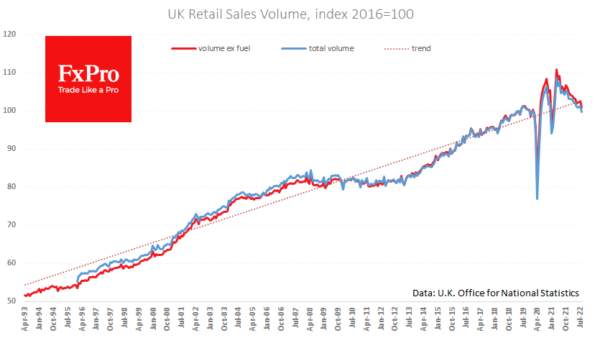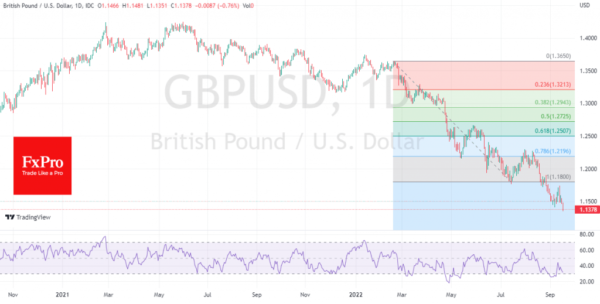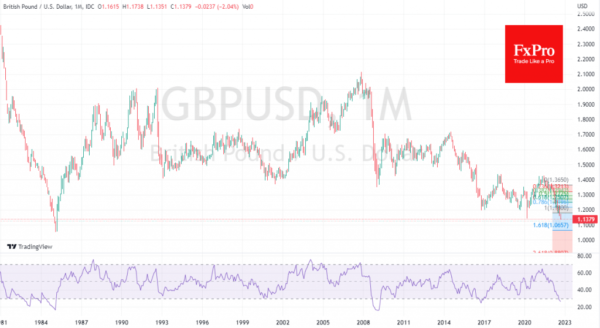A package of retail sales statistics in Britain appears to have removed the last layer of support for the Pound, sending it into a dive. GBPUSD earlier today renewed its lows since 1985, dropping to 1.1350.
Fresh data showed a 1.6% m/m and 5.4% y/y drop in sales, which was noticeably weaker than the expected 0.5% m/m and 4.2% y/y decline. This upsetting surprise has added to the pressure on Pound, which has been losing 0.9% against the dollar and yen and 0.6% against the euro after the report.
There has been an almost non-stop, albeit very measured, sell-off in the Pound since August 11, with a brief pause for a shake-out of the dollar bulls’ positions. In turn, this momentum looks to be part of a downward wave since March. In that case, the GBPUSD can fall to 1.06, where the 161.8% Fibonacci mark passes from the February peaks to the July lows. It is also worth noting that this technical target is very close to the historical lows of the GBPUSD at 1.0520, which only adds to its attractiveness for the rest of the year.
Due to inflation being off the charts by historical standards, the Bank of England has much more motive to make currency or verbal interventions to buy the collapse of the Pound. This is especially true given the recent one-way movement in the British currency. As such, traders and investors should be prepared for a rate hike of more than 50 points next week, as previously done and expected. A tightening of monetary authority rhetoric is also likely.
















